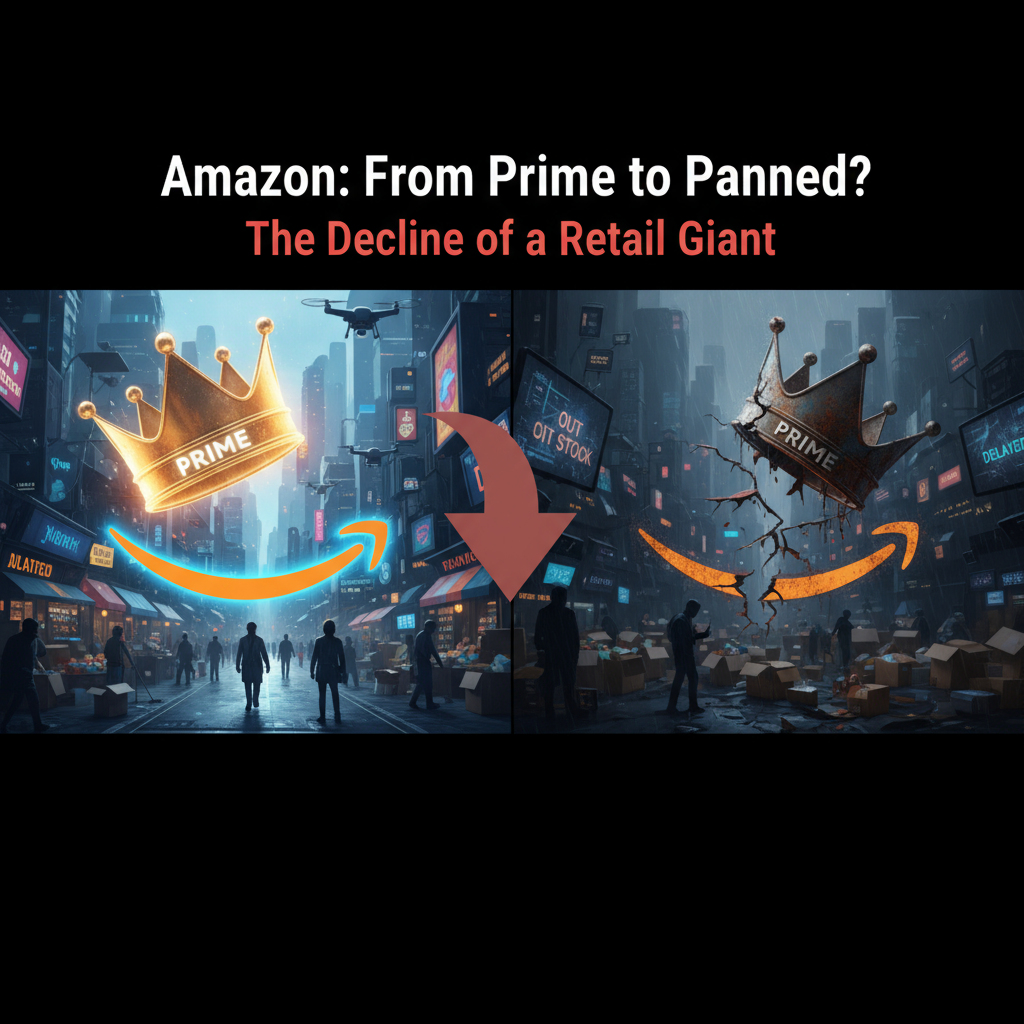Way Past Its Prime? Unpacking Amazon’s Decline from E-commerce King to… Rubbish?
Remember the thrill of a seamlessly delivered package, the endless aisles of quality products, and the almost magical convenience of Amazon? For many, that golden era feels like a distant memory. What was once the undisputed titan of online retail is increasingly being criticized for a growing list of frustrations. From an influx of counterfeit goods to a user experience riddled with ads, it seems Amazon is “way past its prime.” But how did a company that revolutionized shopping get so, well, rubbish? Let’s delve into the perceived decline of this retail behemoth.
The Identity Crisis: Is Amazon a Marketplace or a Store?
One of the most significant shifts contributing to Amazon’s perceived decline is the blurring lines between it being a curated retailer and an open marketplace. In its early days, Amazon presented itself as a reliable store, offering a carefully selected range of products. This fostered trust, as customers expected a certain level of quality and authenticity.
However, the rapid expansion of its third-party seller program, Amazon Marketplace, has fundamentally altered this perception. While the marketplace model offers incredible breadth and choice, it also opens the floodgates to a barrage of issues. Suddenly, the platform is awash with generic, unbranded items, often featuring identical product descriptions and images, making it nearly impossible to distinguish between genuine products and cheap knock-offs. This shift diluted the brand’s perceived quality, turning what was once a trusted storefront into a confusing and often frustrating bazaar.
A Flood of Fakes and the Erosion of Trust
Perhaps nothing sours a shopping experience more than receiving a counterfeit item. This issue has become a persistent thorn in Amazon’s side, with countless reports of fake goods, particularly in categories like electronics, apparel, and beauty products. Shoppers relying on the Amazon brand now find themselves sifting through a minefield of questionable listings, often indistinguishable from legitimate ones.
The sheer volume of listings makes effective vetting a monumental challenge. While Amazon has implemented various programs to combat counterfeiting, many consumers feel these efforts are insufficient. The consequence? A significant erosion of trust. When you can no longer confidently assume the authenticity of a product bought on Amazon, the entire value proposition of convenience and reliability begins to crumble. Why pay extra for Prime shipping when you might receive a substandard or even dangerous fake?
The Advertising Onslaught and a Degraded User Experience
Navigating Amazon’s website and app used to be a relatively clean and efficient process. Now, many users report a significantly degraded experience, largely due to the relentless barrage of advertisements. Every search, every product page, seems to be festooned with sponsored listings, “customers also bought” suggestions, and other promotional content.
While advertising is a legitimate revenue stream, its over-saturation on Amazon feels intrusive and disruptive. It makes it harder to find relevant products organically and often pushes irrelevant or lower-quality items. This focus on maximizing ad revenue at the expense of user experience reflects a potential shift in priorities – from customer-centricity to profit maximization – which ultimately harms the very customers who built the platform. The once-seamless journey has become a cluttered, often frustrating ordeal, turning a quick shopping trip into an investigative mission.
Beyond the Buy Button: Prime’s Fading Luster and Other Woes
Amazon Prime, once a no-brainer subscription for its lightning-fast shipping, also faces increasing scrutiny. While expedited delivery remains a core benefit, the rising cost of Prime and the occasional late or incorrect delivery experiences have many questioning its value. Furthermore, the aggressive push of other Prime benefits, like Prime Video and Music, often feels like a way to justify the subscription cost, rather than genuinely enhancing the core shopping experience.
Beyond Prime, other subtle changes have chipped away at customer satisfaction. Product reviews, once a reliable guide, are now often dominated by questionable five-star ratings, potentially from incentivized reviewers. Customer service, while still generally available, can feel less effective than in previous years, with automated systems often creating more hoops to jump through. Taken together, these various pain points contribute to a general feeling that Amazon is no longer prioritizing the customer experience in the way it once did.
Conclusion: Can Amazon Reclaim Its Crown?
The criticism leveled against Amazon isn’t just noise; it reflects a genuine shift in public perception. The company that once set the gold standard for online retail now faces widespread accusations of prioritizing profit and growth over product quality, user experience, and customer trust. The question remains: can Amazon reverse this trajectory?
Reclaiming its former glory would require a concerted effort to address the concerns of its disillusioned customers. This would mean a more rigorous crackdown on counterfeit goods, a re-evaluation of its advertising strategy to prioritize user experience, and a renewed focus on the core values that made it indispensable in the first place. Until then, many will continue to view Amazon as a shadow of its former self – a once-revolutionary platform that, sadly, has fallen way past its prime.
